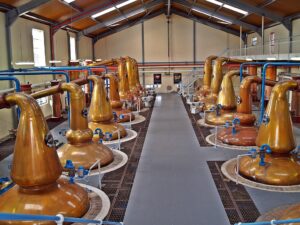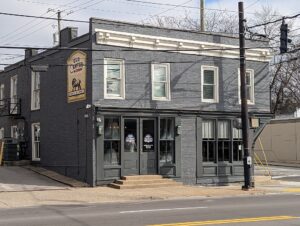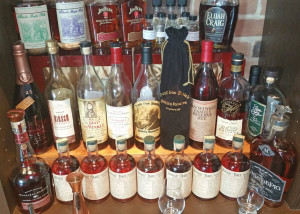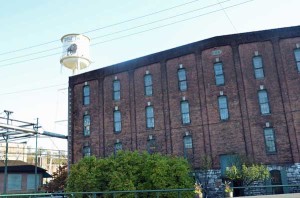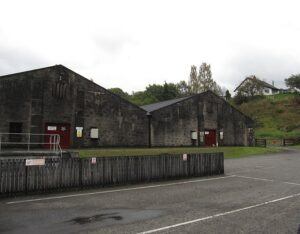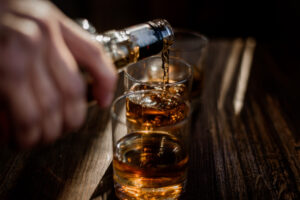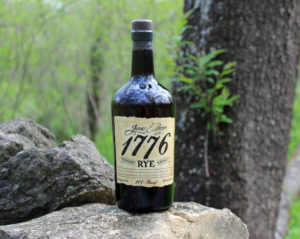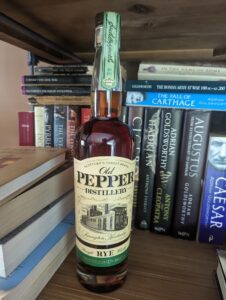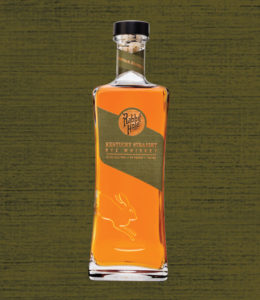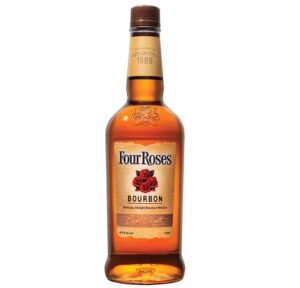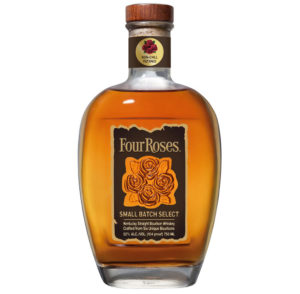New Economic Numbers And Tax Breaks Leave More Questions Than Answers By Richard Thomas February saw the release of a key economic report from the Kentucky Distillers Association (KDA), the trade group that represents the Commonwealth’s bourbon industry. The statistics presented in the report were held up as a cause for celebration, billed as a …
New Economic Numbers And Tax Breaks Leave More Questions Than Answers
By Richard Thomas

Heaven Hill rickhouse near Bardstown, Kentucky
(Credit: Richard Thomas)
February saw the release of a key economic report from the Kentucky Distillers Association (KDA), the trade group that represents the Commonwealth’s bourbon industry. The statistics presented in the report were held up as a cause for celebration, billed as a picture of the Kentucky bourbon industry going from triumph to triumph, and its release was attended by leaders from both the state government and the bourbon industry.
“Kentucky’s economy is booming, and the Bourbon industry is helping us build a strong economy for generations to come,” said Gov. Andy Beshear. “Today, this signature industry is generating $9 billion in total economic impact, with more on the way. We thank our distilleries for working hard to create more good jobs and boosting our tourism industry across the Commonwealth.”
I’m loathe to disagree with Andy Beshear, especially as both he and his father before him are/were outstanding governors for the bourbon industry. That said, I command a long memory and have some graduate-level economics courses under my belt, two characteristics that led me to some questions over the report that occasioned those remarks. Chief among those questions is “is this data as good as it seems” and “what about the salient issues for Kentuckians not discussed by the KDA?”
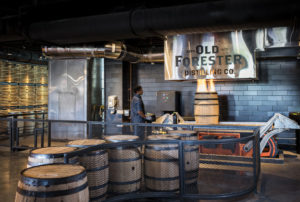
Old Forester’s signature is its in-house cooperage
(Credit: Brown-Forman)
Kentucky Bourbon As A $9 Billion Industry
The headline statistic in the new data is that Kentucky bourbon is now a $9 billion industry. Mind you, that does not mean it generates $9 billion in sales or profits; it means the industry has a $9 billion economic footprint. This is keeping it in tandem with Scotch Whisky, the other leading whiskey industry in the world (Scotch was estimated to have a £7.1 billion footprint in 2022), and makes bourbon one of the state’s most important industries. That number also represents the growth of Kentucky bourbon, but how much growth?
When I first started The Whiskey Reviewer twelve years ago, that KDA figure for the bourbon industry was $8 billion. For the last several years, that figure has been $8.5 billion. Now it has reached $9 billion, and over that time the industry has grown from having fewer than twenty active distilleries in the state to “100 distilling locations operated by around 84 companies in Kentucky,” representing a fivefold increase since 2009. Most of those new distilleries are craft-scale, but some are medium-sized enterprises (New Riff, Rabbit Hole, Wilderness Trail) and at least one is large (Bardstown Bourbon Company).
Another factor, one that shouldn’t require a long memory to recall, is the recent inflationary cycle. That spike of inflation ran from 2020 to 2023, with an overall rate of 6.7% during that period. Roughly speaking, for three years inflation ran triple to what it had been for the whole of the 21st Century, and those three years cover the majority of the time since the previous report on the scope of the Kentucky bourbon industry. Some simple math indicates that the half billion dollar growth tracked by the KDA (more or less) corresponds with inflation.
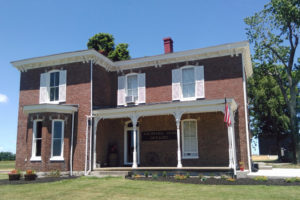
The old farmhouse at Wilderness Trail
(Credit: Richard Thomas)
Knowing that, I was surprised the new figure wasn’t higher, but that is as far as this exercise in being informed enough to exercise a little critical thinking go. Whether that is because inflation ate up the value of the industry’s growth or because growth has been slowing, I can’t say, but it certainly does not represent an inflation-adjusted surge of strong growth that one might have expected.
Bourbon, Taxes And The Bluegrass
As part of the new report, the KDA touted the 2023 passage of House Bill 5 (HB5), Kentucky’s infamous barrel tax. That is a 0.05% property tax on whiskey aging in warehouses (1/9 of the 0.45% tax on other forms of tangible property), and is the only tax of its kind in the US. The tax will now be gradually phased out between 2026 and 2043. In 2022, the Kentucky bourbon industry paid over $40 million in barrel taxes, and the industry has long claimed the tax is an anti-competitive hindrance to their industry.
The industry may be right, in that they are paying a tax that no one else in the United States must pay, but on a global level the truth of that statement is less clear. Every country has its own unique tax and regulatory quirks, and comparing them is often a matter of apples and oranges, or apples and pears at best. Certainly few have considered paying the tax so strong an impediment as to prevent them from a whiskey-making business in Kentucky, as witnessed by the boom in new distillery starts this last decade and the absence of any whiskey company picking up and moving out of the state.
The reason why only Kentucky has this tax is two-fold: the tax was enacted in the 1940s and ever since Kentucky has the nation’s largest whiskey industry, and its largest by a huge margin. Also, the state is home to large and influential groups of Protestant teetotallers. An old axiom in the state is those folks don’t want liquor sold in their counties, but they are more than happy to collect taxes from the whiskey business.
Barrel taxes are used to fund the schools, police, fire and other services in the counties they are collected from, and rural counties in particular are heavily dependent to fund their essential functions. In the run-up to the passage of HB5, this issue was often simplified into counties that were home to distilleries and those that hosted only bourbon warehouses. It was presumed the former would be fine, since the distilleries provided dozens or hundreds of permanent jobs. The latter would suffer upon losing the barrel tax because it was the only revenue they derived from the industry, because warehouses create fewer jobs and those are often not permanently assigned to a given storage property in any case. Indeed, many county officials from these warehouse-only counties said losing the barrel tax would make the bourbon industry a fiscal parasite on their communities, since they would still be stuck holding the bill for the wear and tear on their roads caused by barrel-hauling trucks and the additional fire protection the warehouses require.
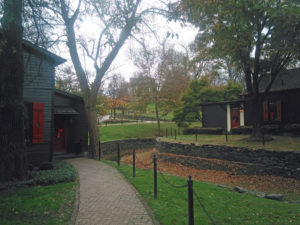
Maker’s Mark, still one of the prettiest distilleries in Kentucky
(Credit: Richard Thomas)
The reality, however, is worse than that. Marion County is home to Maker’s Mark, Limestone Branch and the cooperage Independent Stave Company, so the bourbon industry creates plenty of permanent jobs there. Yet the barrel tax represents 70% of the budget for the county seat of Loretto. Leaders like Marion County Judge Executive David Daugherty question why the industry needs tax relief when it has been experiencing record growth and investment for the last several years, and he has a point. Again, those of us with long memories can fairly posit that a better time for tax relief might have been during the Whiskey Bust of the 1970s and 1980s.
Besides, HB5 is that this is only the latest tax break received by the bourbon industry during the modern Bourbon Boom. A previous measure was passed in 2014. Since that measure was passed, most Kentucky distillers haven’t even been paying the full barrel tax each year.
I think the real divide is between rural and urban or suburban counties. Places like Woodford, Jefferson and Boone counties have a far larger and more diversified tax base than Anderson, Bullit or Marion counties. I suspect in the long run, something will be done to bail out the counties losing their barrel money, if for no other reason than the statehouse is dominated by Republicans, and those rural counties are where the Republican voters live. Yet what that means in practice is that barrel tax will de facto be paid by other taxpayers in the state.
Asking Questions
One of the problems with looking at these issues is just how many variables contribute to them. For example, those same rural counties that complain about losing the barrel tax are home to farms that grow the corn that is ravenously consumed by the bourbon industry or feed their cattle for free off the spent grain waste of the distilling process. Kentucky Agriculture Commissioner Shell said, “Kentucky farmers sold nearly 19 million bushels of corn and 2.6 million bushels of other grains to Kentucky distillers last year. The economic effects on our industry are building a stronger agricultural community for years to come.”
I don’t pretend to have all the data, let alone all the answers. But as I wrote at the beginning, I have sufficient insight to look at all this and be left scratching my head. Some years ago, the Bourbon Boom was attended by the constant question of “yes, it’s all very well and good, but when and how will the good times end?” I don’t hear that worry much anymore, but looking at these numbers, perhaps I should be. It looks more like a relative (emphasis on that word “relative”) slowdown than a continued surge. And as a Kentuckian, I can’t help but wonder if there won’t be a sales hike tax coming in the 2030s to offset the loss of barrel tax revenue for those bourbon industry counties that find they can’t pay to fix their roads anymore.






